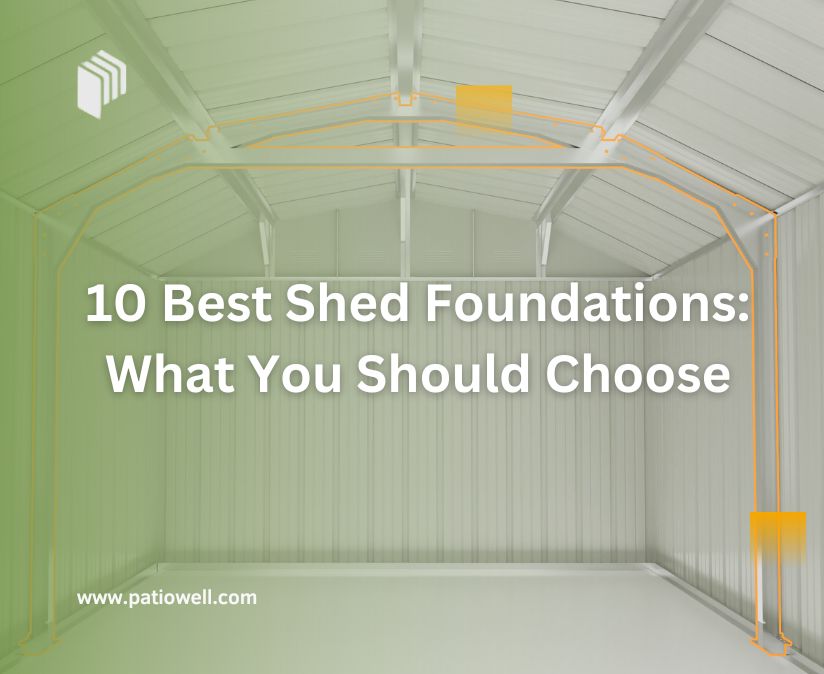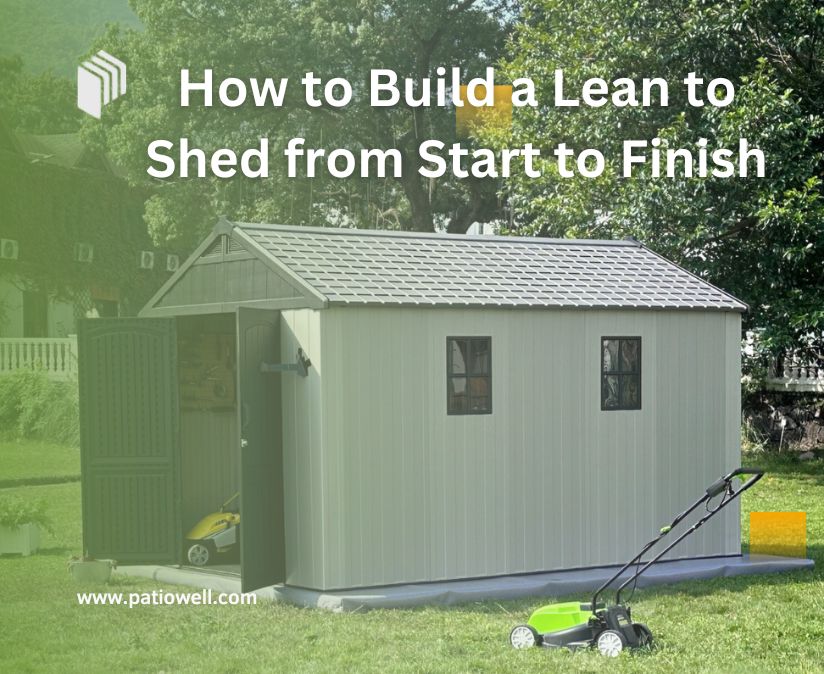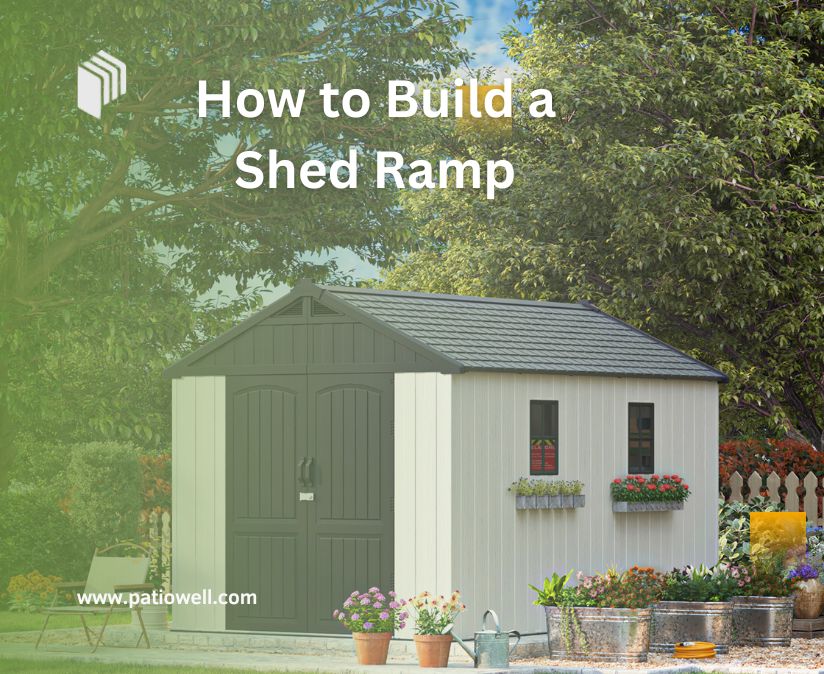What is the best shed foundation for your project? If you are going to build a shed, at a certain moment, a question may appear, like what kind of foundation is right for your shed. A good foundation is important to keep your shed strong, stable, and long-lasting.
On one hand, yes, choices abound; on the other, all this myriad of choices can get puzzling. Don't worry though, this article will make it quite simple for you. We will outline 10 of the best shed foundations, their pros, and cons, etc. In the end, you'll definitely have picked one that suits your needs.
Table of Contents:[hide]
What is the Best Shed Foundation?
The best type of shed foundation will largely be determined by a variety of factors: the size of your shed, the type of ground in your yard, and how you intend to use it. You will want your foundation firm, level, and supportive for carrying such weight while offering protection to the shed against potential elements like moisture and shifting of soils.
These do not have one best answer, since each type of foundation has its strengths and its weaknesses. For instance, a simple gravel pad foundation, being less costly to construct, offers ease, whereas a concrete slab foundation offers maximum durability. Choosing the right one ensures your shed lasts for years and stays in great shape.
Now, let's review the top 10 best shed foundations for any needs that you can consider this year.
10 Best Shed Foundations
Following are the top 10 best shed foundations that you can consider for your project, based on your needs:
1. Concrete Block Foundation
A concrete block foundation is perhaps the simplest and least expensive way to support smaller- to mid-sized sheds by simply setting concrete blocks beneath the shed in strategic positions to support the weight of a shed evenly and keep the shed dry off the ground.
|
Pros |
Cons |
|
|
2. Slab of Concrete with Foundation
The concrete slab foundation is among the most durable and permanent options for a shed. It provides a solid, flat base for all sizes of sheds, excellent for heavy-duty structures or when long-term use is contemplated.
|
Pros |
Cons |
|
|
3. Gravel Pad Foundation
A gravel pad foundation is a practical and affordable choice, particularly for small to medium sheds. It provides excellent drainage and is relatively easy to install.
|
Pros |
Cons |
|
|
4. Pavers Foundation
A paver foundation basically means laying down individual paving stones on a prepared surface for a solid, level base. This will not only add functionality to your shed but also an aesthetic touch to the surroundings of your shed. You can lay pavers in different patterns and styles according to your preference.
|
Pros |
Cons |
|
|
5. Skids Foundation
A skids foundation uses pressure-treated wooden beams placed underneath the shed to elevate it off the ground. It's an ideal option for smaller sheds and offers portability, as the shed can be relocated easily.
|
Pros |
Cons |
|
|
6. Pier and Beam Foundation
A pier and beam foundation employs vertical piers to elevate the shed, making it perfect for uneven or sloped ground. This kind of foundation also allows air to flow under the shed to prevent moisture buildup.
|
Pros |
Cons |
|
|
7. Plastic Grids Foundation
Smaller sheds can feature a plastic grid foundation, which is environment-friendly and light. Filling the grids with the required amount of gravel or sand and laying them on compacted leveled ground provides solidity for the grids. That type of base is brilliant in terms of drainage issues and is really easy to set up.
|
Pros |
Cons |
|
|
8. Base Wooden Platform
A raised wooden platform foundation provides a solid and level base for your shed. It's ideal for sheds that must be constructed in an area with poor drainage or on uneven ground, and it's somewhat easy to build.
|
Pros |
Cons |
|
|
9. Concrete Pier Foundation
A concrete pier foundation is a great option for sheds that have to be raised and anchored well. The concrete piers are put at intervals beneath the shed for strong support, especially when the ground is uneven.
|
Pros |
Cons |
|
|
10. Earth Anchors Foundation
An earth anchor's foundation is pretty straightforward and one of the most effective ways to keep your shed attached to the ground, especially if it faces high winds. Driven into the soil, anchoring straps are then hooked onto the shed for full resistance against movement.
|
Pros |
Cons |
|
|
How to Choose the Best Shed Foundations?
Patiowell offers a variety of sheds that come with pre-installed floors, making the installation process really easy and providing a solid base for storage. A selection of models one can choose from includes:
Patiowell 10x8 Metal Shed ProThis heavy-duty metal shed features an optional floor base for added stability and support. It is designed for withstanding harsh weather conditions, which include rain, wind, and UV.
Patiowell 10x10 Metal Shed ProThis is a high-quality metal shed that does not rust, has a floor base, and is ideal for safe storage outdoors. It is designed in such a way that it is roomy to accommodate many storage needs.
Patiowell 10x12 Metal Shed ProThis spacious metal shed has an optional floor base for lots of room for tools and equipment. Sturdily constructed, it is sure to last for a long time.
Patiowell Fit-it 4x8 Plastic Storage Shed ProThis compact plastic shed comes with a floor for easy assembly and low maintenance. The ideal solution for smaller storage needs.
Patiowell Fit-it 4x6 Plastic Storage Shed ProThis plastic storage shed has a built-in floor and is designed to be tough yet easy to use. It is compact enough for confined spaces.
The sheds are designed to cope with different weather conditions besides providing security in the storage of goods.
Final Words
Setting the proper shed foundation is critical to make it stable and durable. The right option depends on the size of the shed, the plot of land, and what your budget will allow for.
If convenience is a priority, the Patiowell sheds may be a great option to go with because they all come with floors. Regardless of what one chooses, this is going to be suited to your needs and become a great foundation for your shed.
Diana Mason
Hi there! I’m Diana Mason, the chief editor of Patiowell brand. With over 15 years of diving deep into the world of outdoor furniture, I’ve developed a keen eye for what makes outdoor spaces truly special. I love sharing tips and inspiration to help you create your perfect backyard retreat. Our blog is a reflection of my passion and expertise, featuring only the best pieces that I personally vouch for. Thanks for stopping by—I can't wait to help you transform your outdoor living space!








Leave a comment
All comments are moderated before being published.
This site is protected by hCaptcha and the hCaptcha Privacy Policy and Terms of Service apply.